Exclusive
The Benin monarchy
Published
7 years agoon
By
Olu Emmanuel
“We the Benin people have gotten used to having a monarch ruling over us. The Benin people cannot do without a king and they wouldn’t have anyone who isn’t of that descent or line become a king over them” … Dr. Ekhaguosa
By Tam Fiofori
According to Dr. Aisien, a renowned surgeon and Benin historian, “The institution of kingship in Benin is over 10 centuries old, with a break between the Ogiso and the Oba dynasty. We’ve had 31 Ogisos. Benin is on a pedestal of its own in that we practice ‘First-son-only successor system as it is in England.”
Historically, about the year 1400, Benin broke away from the elective process of choosing an Oba and declared the present system of primogeniture to ensure that an Oba was succeeded by his eldest son. The Benin nobles also lost their power to depose an Oba.
“The kingship of Benin didn’t start with the Obaship. The Obaship was built on an existing kingship which was the Ogisos. Since the Obaship started it hasn’t been broken.” Dr. Aisien explains. “They tried the idea of not having a king with Ogiamen and it didn’t work out, so happily they accepted the Obaship. Everybody in the Benin kingdom’s subject to the Oba and it is nice to have a leader that is elected unchallenged and sent by God devoid of human elections and it has served the people well all these centuries,” he adds.
It is its remarkable resilience against all odds and in the face of daunting challenges from unexpected quarters; within and without, that has been the most outstanding quality of the Benin Monarchy over the centuries.
How the Benin Monarchy has achieved this state of permanent survival over such a long period of time and during socio-political periods of turbulence within the Benin Kingdom, Nigeria and on the global scene is a classic case study of an astute deployment of leadership qualities, bringing into play diplomacy, some measure of accommodation, employment of military might when needed and a very progressive understanding of the inevitable forces of change. Simply put, the Benin Monarchy over time has embraced the doctrine of change; change that has not eroded its core values and accepted its ‘divine’ role in this service of the Benin people.
According to the current and 18th Iyase (Prime Minister) of the Benin Kingdom, Chief S.O.U. Igbe, “The Benin society and the Oba developed together. All our activities centered around the Oba’s palace. Benin people are mostly farmers and used to hard work. In a typical Benin family setting, there was no time to waste and there was a time for everything that should be done. The villages fed the palace. In Benin, there are different age/social groupings. All have instructions and rules from the palace. The lives in people homes are influenced by the Oba’s style and each community has it Odionwere (council of elders).
Many people, mostly outsiders, marvel and are puzzled that the Benin Monarchy has been able to survive the British colonial system, the civilian and military systems in Nigeria as well. To Dr. Aisien the key has been the continued relevance of the Benin Monarchy. “It is a culture that have been on for many centuries and without it we wouldn’t be where we are now and we wouldn’t be able to call ourselves Benin people.
People want to guide their lives by their culture. The divinity of the Obaship in Benin makes it devoid of the squabbles and the arguments associated with getting a successor to the throne. It has brought stability.”
Interestingly; the first serious bicker and challenge to Obaship came from within the Benin society itself. It involved Evian, a man who became a hero because he defeated a monster that had preyed on the people. He was made an Oka-evbo, a sort of administrator until he was getting old. Then he called the Edion together (later known as Uzamas) and wanted them to make his son Ogiamen succeed him as Oka-evbo or ruler. But the Edion vehemently opposed the idea, insisting that it was only the son of a king (known as Ogiso at that time) that should rule in the stead of his father. This was how the problem with the Ogiamen’s family started.
This development made it necessary for the Edion to go in search of Prince Ekaladerhan son of Ogiso Owodo. Herein lies the Benin-Ife-Oduduwa (or Izoduwra) connection. Eventually Prince Oramiyaan came from Ife (Uhe) and had a son with Erinmwinde, the daughter of a noble man Osanego, the Onogie of Ego and the son became Oba Eweka 1 of the Benin Kingdom (about 1200 A.D).
When Oba Eweka 1 became Oba, a palace was built for him at Usama. Usama still stands till this day at the junction of Siluko road and Ekenwan road across the Oba Market road in present Benin City and remains one of the 7 stations of coronation a newly-crowned Oba must visit.
Two of Eweka’s children reigned after him. The last one had a child, Afebor who became Oba with the title Ewedo (about 1255 A.D).
Immediately Oba Ewedo was crowned, he understood the threat to his supremacy posed by Ogiamen. He started building the Oba’s palace where it is today. The present palace then covered as far as the present day Prisons on Sapele road and across the Cultural Centre. In fact Ewedo started the idea of prisons in Benin hence it is also the name given to prison yards in Benin. After being crowned early in the morning, Ewedo prepared to enter into the city to his newly built palace. At that time, some of the big men and rascals were seizing parts of the town as if they owned them and nobody could stop them. Ewedo was with some of his soldiers and the first obstacle he encountered was at Isekhere where they tried to stop him. He cowed him and gave him some presents and they let him pass. The second place was at the streams called Omi and Ogiamen was there with his men and would not allow the newly crowned Oba pass.
Ewedo tried to convince Ogiamen but Ogiamen was very rude which got Oba Ewedo annoyed and they actually fought and Ogiamen ran away and while he was running told Ewedo to meet him in seven days in Ekiokpagha (Okpagha market in the St. Matthew’s church area of present day Benin City)
So Oba Ewedo continued into the city and moved into the palace. Seven days after, he got soldiers from his mother’s village and went to Ekiokpagha as agreed. Ogiamen was given a serious beating and defeated. He was dragged back to Ekiokpagha where he surrendered to the Oba. The Oba spared Ogiamen’s life and told him to use his name as a title because of his father Evian who has a good name and was still respected. Thus Oba Ewedo in his magnanimity made Ogiamen a title name and incorporated him as a member into one of the palace title houses known as Uzama n’ Ibie. Since then every new Oba of Benin seven days after his coronation fights what is now a traditional mock-battle with the current Ogiamen who then pledges his full loyalty and accepts the supremacy of the Oba over the entire Benin Kingdom.
Historically, in terms of setting down administrative institutions and procedures to enable the Oba and the Benin Monarchy run the Benin Kingdom, Oba Ewedo in 1255 A.D initiated some very important positions in Benin Kingdom governance. One of such was the position of Iyase The Prime Minister of the Benin Kingdom.
According to the current Iyase, Chief Igbe, “It was the first Iyase who fought the Ekiokpagha battle against the Ogiamen and anti-royalist forces. He wasn’t Iyase then and for winning the battle was installed the Iyase as some sort of ‘thank you’ gift. Thus he was a warlord for the Benin Kingdom and started fighting for the people. Then as it is generally believed, the Iyase is the bridge between the people and the palace. ”
There are categories of Chiefs who work with the Benin Monarchy in governance. The Eghavebo n’ ore [like the Executive Council] are chiefs of the town and are headed by the Iyase. All the other chiefs are palace chiefs. The Eghaevbo n’ ogbe are the most senior palace chiefs. Chief Igbe has been the Iyase of the Benin Kingdom since 1997 and was appointed by Oba Erediauwa.
“When I go to the palace, the Oba will ask, Iyase, how is it out there?” I will say everything is fine. The Iyase of today doesn’t go to war. There are no physical wars to be fought. So when I took my title what I thought of was to see whether we can do some economic fighting because Benin was generally regarded as a civil service town. In bid of this economic war, we tried to form a company. Benin Investment and Development Company (BIDCO), registered it. I thought that was my war to try to improve people’s lives, get them jobs. And I always came to inform the Oba of anything I did then”
There is a long list of Ogisos and Obas who have had illustrious reigns and who have contributed innovations in terms of paraphernalia of office as well as systems of administration which have helped to sustain and strengthen the Benin Monarchy over the years.
The third Ogiso, Ere, made outstanding inventions and innovations and ensured that artifacts and symbols of kingship such as the king’s stool and the swords of authority, the Ada and Eben be made as well as the beads used to make the crown the Oba wears.
These beads, according to Dr. Aisien, were of two types; mineral beads from rocks sourced locally and European beads made from coral in the Mediterranean Sea and brought to Benin by the Portuguese. Ogiso Ere also brought about the round leather fan and the round leather box made of bark and leather, beaded anklets and collars and introduced domestic items such as wooden plates, towels, mortars, pestles, which were placed in ancestral shrines, carved by a guild of carvers.
Incidentally, Oba Eresonye ( 1975 A.D), the son of Akinsogwe the 1st , took a name that was founded on the name Ere. Oba Eresonye was reputed to be the wealthiest Oba to have lived so much so that he built a house of cowries within the palace. Money in those days was in cowries, so cowries were used as blocks to build it.
The procedure on who become an Oba of Benin and how he chose his name as an Oba were firmly established many centuries ago during the first dynasty of the Benin Kingdom and have strictly been adhered to since then.
Prince Oranmiyan’s son, born at Ego was brought up at Use (both villages a few miles outside Benin City on the Siluko road). In his excitement of winning a game played with marbles he made his first utterance “Owomika” (I have succeeded) which was corrupted to Eweka by the inhabitants of Use who were surprised to hear a Benin child make his first utterance within Yoruba language.
In obedience to Prince Oranmiyan’s command, the young prince was ultimately crowned Oba under the title of Eweka at Usama in about 1200 A.D. Thus began the second period, the dynasty of Oba’s in the Benin Empire. Ever since, every Oba has to go to Use before his coronation to chose a title at the spot where Eweka 1 won the game of Akhue and uttered the word that became his title.
Eweka 1, was the creator of the council of leaders of various quarters, Uzama N’ Ihinron comprising the Oliha, Edohen, Ezomo, Ero, Eholo n’ Ire and Oloton, and he made their titles hereditary and ordered that every Oba of Benin must be symbolically crowned by their leader Oliha, because it was they who sent to Ife to fetch Prince Oranmiyan. Later the Edaiken, the Oba’s heir was classified with the Uzama N’ Ihinron by Oba Ewuare the Great (about 1440 A.D) bringing their number then to seven.
Ewuare’s eldest son, Kuoboyuwa was sent to be the deputy of Iken, a powerful chief at Uselu who had no surviving son. Ever since, the title Edaiken (Edayi n’Iken) of Uselu, has been borne by the eldest son of the Oba of Benin, who also lives at the palace at Uselu, until his coronation.
Since then, after the burial rites of an Oba known as Emwin’ekhua are performed, preparations for the coronation of his heir-apparent, the Edaiken as the new Oba of the ancient Benin Kingdom begins.
The coronation of any Oba of the Benin Kingdom embodies a detailed re-creation of complex procedures, ceremonies and rituals most of which were originally associated with the crowding of Oba Eweka 1 in about 1200 A.D. Oba Eweka 1 is therefore undeniably regarded as the founder of the present Benin Monarchy which has now been in existence for nearly nine centuries.
Thus has been established the programme of the installation ceremonies performed for the coronation of an Oba of Benin which strictly adheres to a sequence of events which include visits EVERY Oba must make to ancestral shrines, homes sacred and religious sites that were also visited by his predecessors. Thus, it is a prescribed journey and pilgrimage for the spiritual rejuvenation of the new Oba.
There have been many great Obas of Benin. Three of them include EWUARE the GREAT about 1440 A.D who was the first Oba of Benin to come into contact with Europeans. He introduced the royal beads and scarlet cloths (ododo) and greatly encouraged Ivory and wood carving in Benin. He invented the wind instrument Eziken like the Fife and the Ema-Edo, the royal band. He introduced coral beads into Benin and since his time the Oba’s palace became the biggest repository of coral beads, ivory and bronze works. He was a renowned magician, physician, traveler and warrior reputed to have travelled over every part of Nigeria, Dahomey, Ghana, Guinea and the Congo. He also made good roads in Benin.
Ozolua the conqueror (1481 A.D) marched with drums and fifes into battle against his enemies. He is alleged to have fought over 200 successful battles, to expand the Benin Empire and subdue rebellion. These exploits earned him the appellation Ozolua n’ Ibaromi Ozolua the Conqueror. He was “respected at home and dreaded abroad.” From Ozolua’s reign Oba of Benin took the title Oba Nokhua or Ogie-Akpolo kpolo Akpolo-Kpolo (Emperor).
Oba Esegie (1504 A.D) made his mother Idia Queen and sent her to reside in Eguae-Iyoba (Queen Mother’s Court) at lower Uselu, which is also refered to as Uselu n’evbo Iyoba (Uselu the land of Queen Mothers). Ever since, every Oba of Benin has given his mother the title of Iyoba of Uselu. Queen Idia is credited to have invented the special royal ceremonial dance Ekasa performed during the coronation of a new Oba. She was very warlike and helped her son defeat the Idah armies. She exercised a lot of political influence in the administration of the kingdom so an almost independent domain of the Queen Mother was created for her. Incidentally, it was an Ivory mask of Queen Idia’s face that was chosen as the official symbol of FESTAC ’77.
These illustrious Obas of Benin reigned before what is now regarded as the biggest- ever challenge and threat to the Benin Monarchy. This was the so-called British Punitive Expedition against Benin City and Oba Ovonramwen in 1897.
The British army attacked Benin, sacked the town, burnt down the Oba’s palace from which Oba Ovonramwen was able to escape. They looted thousands of exquisite and priceless precious ivory, bronze and wood art works from the Oba’s palace and took them to Europe from where they found their way to the great museums in England (British Museum) Europe and the USA where they remain.
Oba Ovonramwen was eventually captured, tried by a British court in Benin, deposed and banished into exile in Calabar where he died in exile in 1913.
Any other Kingdom or Monarchy could not have survived the devastating punitive effects of the British military expedition against the Oba of Benin and the great Benin Kingdom itself.
Against all odds, however, the Benin dynasty of Obas survived the interregnum. And so, seventeen years after the British colonial power deliberately left the throne of the Benin Kingdom vacant for punitive reasons Oko (Prince) Aiguobasimwun, the eldest son of the banished and late Oba Ovonramwen was invested with the traditional title of Edaiken (Heir-Apparent) on April 20th 1914. On July 14th 1914, he was crowned as Oba of Benin at Usama with the title of Oba Eweka II.
Thus began the third period of Benin sovereigns and the second dynasty of the Obas/kings of the Benin kingdom. It is historically instructive that the second Oba Eweka; the son of Oba Ovonramwen ascended the Benin throne more than seven centuries after Eweka I.
Unlike Eweka I, Eweka II who reigned more than seven hundred years later; became Oba of Benin when the kingdom was directly confronted by an encroaching hostile military-backed British colonial administration in Nigeria. The colonial Governor’s Deputy, Mr. A. George Boyle performed the official installation ceremony of Oba Eweka 11 and ironically, the Oba was accompanied by a detachment of soldiers as a guard of honour.
The Governor-General and the founder of Nigeria as an administrative unit, Sir F.D. (later Lord) Lugard, paid a visit to Benin City in November 1914 to see the new Oba Eweka 11. In the same year 1914, the Benin kingdom and the Empire were unilaterarily incorporated into a new colonial amalgamation called Nigeria and Edo-land also became part of the Western Region of Nigeria.
Oba Eweka II, on account of his courage was nicknamed Ovbi-Udu (Lion-hearted) by the Edo people. He rallied the Edo people back to the fold of the Monarchy and laid the solid foundation for the inevitable modernization of Benin; with an emphasis on Western education on which his son Oba Akenzua 11, vastly built and expanded.
Here, it is quite important to note that one of the progressive elements the Benin Monarchy has employed since then, and over time in its adjustments towards sustainable survival has been to embrace western education and administrative skills to embellish and strengthen its own time-tested system of governance by the Benin Monarchy.
The first son of Oba Eweka II, born in1899 (two years after the British punitive expedition) and named Oko (Prince) Godfrey Edokparhogbuyunmwun Basimi Eweka, ascended the Benin throne as Oba Akenzua 11 in 1933. He was crowned Oba of Benin at Usama, early in the morning of April 5th, and at ten o’ clock he was installed by the Lieutenant-Governor of Nigeria Mr. Buchana Smith in front of the Native Court House in the presence of a crowd of ten thousand people. After the new Oba Akenzua 11 had taken the oath of allegiance to His Majesty, the British King George V, the Lieutenant-Governor handed him the staff of office of a First Class African King. The next day, the Oba and chiefs attended in state, a service of Thanksgiving in St. Matthew’s Church Benin City, during which a Bible was presented to him.
Oba Akenzua II was blessed with a balanced vision of how to further modernize the Edo people yet retain and strengthen the best values and traditions of Benin culture, during the changing and sometimes turbulent period of the history of Nigeria and the world itself. He was extremely interested in providing western education for the Edo people.
He himself received extensive and high quality western education at Government School Benin City (1907-1915) and the prestigious King’s College Lagos (1918-20) where he excelled in academics and sports as a cricketer and football player. He received professional training in Administration for two years in the Egba Native Administration; the most advanced in its day.
Thus he firmly planted the seed of western education for the Edo people as well as within the entire family of the Benin Monarchy for generations to come. Chief Emmanuel E. Fiofori who was an Educational Officer and taught at Edo College Benin, recalled in 2000, how Oba Akenzua II was influential in the establishment of Edo College (where Fiofori taught some of the Oba’s sons), and a primary school which he was asked to go and inspect for approval in the forties.
Oba Eweka 11 skillfully kept the Benin Monarchy vibrant and relevant in the new emerging colonial nation called Nigeria. He had to work with a Local Council within the structure of the new system of indirect rule adopted by the British to administer Nigeria. The First World War (1914-18) broke out and Benin contributed in cash and men to help the British war effort.
With his advantage of a good western education and professional training and grooming as an administrator, Oba Akenzua II was able to build on Oba Eweka’s gains.
Within the indirect rule system, he was able to move the Benin Monarchy to the highest level of administration at both the national and levels ; active in a high administrative offices while still Oba.
As Oba of Benin, Akenzua II was a nominated member of the Nigerian Legislative Council [1945-47] and then became a member of the Western Region House of Chiefs as a First Class Oba. In 1966 he was appointed the Chancellor of the Ahmadu Bello University, Zaria, and in 1972, he was awarded an honourary Doctor of Laws of the University of Benin, Benin City.
Akenzua’s reign saw the outbreak of World War 11 which had reverberations in Benin and Nigeria’s political progression from indirect rule to self-government. It was during Oba Akenzua II’s reign that Nigeria also obtained her independence from Britain and the Benin Monarchy now experienced a new administrative working relationship with Regional and Federal civilian governments run by Nigerians as against the British.
Oba Akenzua II spearheaded the demand for the creation of the MidWest Region [made up of Benin and Warri Provinces] and the Midwest Region was created in 1963. Nigeria had its first military coup that led to a very bloody civil war in which Benin and Edo land became theatres of fierce battles and destruction during his reign as Oba of Benin. Then came peace, a Federal Military Government with Military Governors in the new 12-state structure; that had Benin City in a new Bendel State, as the capital. Yet Oba Akenzua 11 kept the Benin Monarchy untainted, respected and looked up to for advice at state and national levels of administration in Nigeria.
It is instructive that relations between the British and the Benin Kingdom greatly improved during Oba Akenzua’s long 45-years reign. Top British royalty and officials visited him at his palace in Benin City, he was invited to visit Britain, and in what could well be seen as a conciliatory gesture Queen Elizabeth II visited Benin City in 1956 and shook hands with Oba Akenzua II.
The Benin Monarchy and the Benin/ Edo Empire had come a very long way since the ancient Kingdom of Oba Akenzua 11’s ancestor Obas.
Prior to the advent of the British colonial government in Nigeria, the Benin Empire was impressive in expanse and administrative clout.
British colonial rule, the emergence of an independent sovereign Nigeria and the creation of states within a Federal Republic of Nigeria all took their toll in reducing the size of the Benin Empire and re-directing the administrative powers and cultural influences of the Oba over the non-Benin people in the new Bendel State.
Nearly ninety years after Oba Ovonramwen was crowned and eighty-two years after the British had used it colonial army to banish him, his great grandson, Oba Erediauwa was crowned the new Oba of Benin in 1979 during another military regime. This time, it was the military regime of the Nigerian army which had seized power from democratically-elected Nigerian politicians thirteen years earlier.
Oba Erediauwa was crowned on March 23rd 1979 as the 38th Oba of Benin. Oba Erediauwa like his father Oba Akenzua II and his grandfather Oba Eweka II, ascended the throne of the Benin Kingdom in the throes of impending and profound political changes and re-orientation in Nigeria.
Oba Erediauwa became the fourth successive Oba of Benin to have ascended the Benin Monarchy and reigned during powerful external military regimes; an experience that was alien and unheard of in the days of their earlier ancestor-Obas.
Oba Erediauwa was the mature fruit of the seed his grandfather Oba Eweka II planted and his father, Oba Akenzua properly nurtured. He was a new Oba groomed and well-equipped; seeped in the culture, norms and traditions of the old Benin Empire but prepared for Nigeria of the eighties and beyond.
Come Thursday 20, 2016, Crown Prince Eheneden Erediauwa would ascend the throne of his forebears succeeding his father Omo N’Oba Erediauwa who joined his ancestors in 2015.
King List (Obas) of the Benin Kingdom
1. EWEKA 1 about 1200 A.D.
2. UWAKHUAHEN about 1240 A.D.
3. EHENMIHEN about 1240 A.D.
4. EWEDO about 1255 A.D.
5. OGUOLA about 1280 A.D.
6. EDONI about 1295 A.D.
7. UDAGBEDO about 1299 A.D.
8. OHEN about 1334 A.D.
9. EGBEKA about 1370 A.D.
10. OROBIRU about 1400 A.D.
11. UWAIFIOKUN about 1432 A.D.
12. EWUARE about 1440 A.D.
13. EZOTI about 1473 A.D.
14. OLUA about 1473 A.D.
15. OZOLUA about 1481 A.D.
16. ESIGIE about 1504 A.D.
17. ORHOGBUA about 1550 A.D.
18. EHENGBUDA about 1578 A. D.
19. OHUAN about 1606 A.D.
20. AHENZAE about 1641 A.D.
21. AKENZAE about 1661 A.D.
22. AKENGBOI about 1669 A.D.
23. AKENKPAYE about 1675 A.D.
24. AKENGBEDO about 1684 A.D.
25. ORE-OGHENE about 1689 A.D.
26. EWUAKPE about 1700 A.D.
27. OZUERE about 1712 A.D.
28. AKENZUA 1 about 1713 A.D.
29. ERESOYEN about 1735 A.D.
30. AKENGBUDA about 1750 A.D.
31. OBANOSA about 1804 A.D.
32. OGBEBO about 1816 A.D.
33. OSEMWEDE about 1816 1847 A.D.
34. ADOLO about 1848 1888 A.D.
35. OVONRAMWEN 1888 1914 A.D.
36. EWEKA 11 – 1914 1933 A.D.
37. AKENZUA 11 1933 1978 A.D.
38. EREDIAUWA 11 1979 2016
• Source … Short History of Benin by Egharevba.
Tam Fiofori is a Writer, Photojournalist, Filmmaker and Media Consultant. He is the author of the world-acclaimed book; A BENIN CORONATION: OBA EREDIAUWA published in 2011, and which provided source material for this article.
You may like
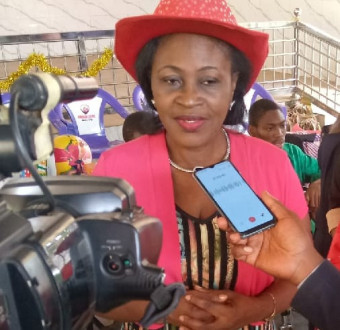

Edo State Govt to audit, give more scrutiny to orphanage homes
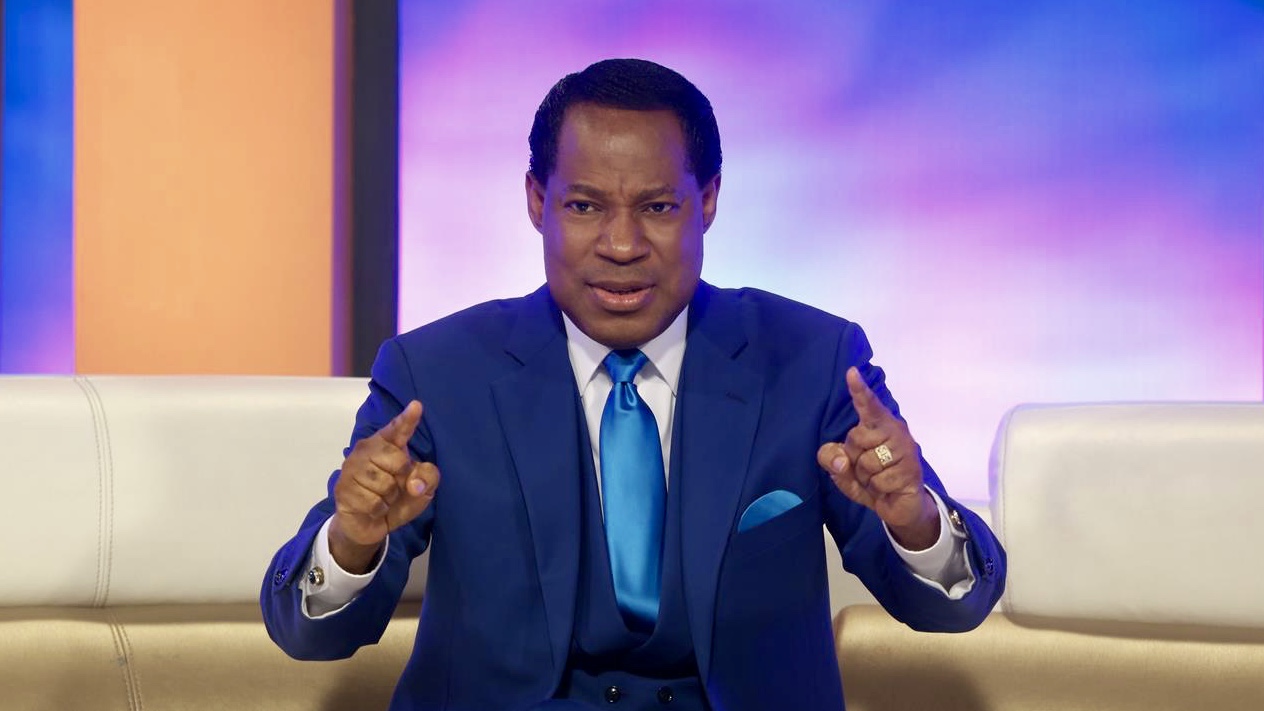

Obaseki eulogizes Pastor Oyakhilome on birthday


Edo state, NCC partner on deployment of telecom infrastructure
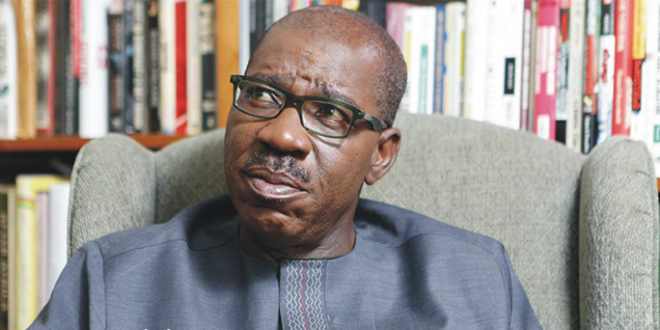

Obaseki defends herdsmen, says not all are killers
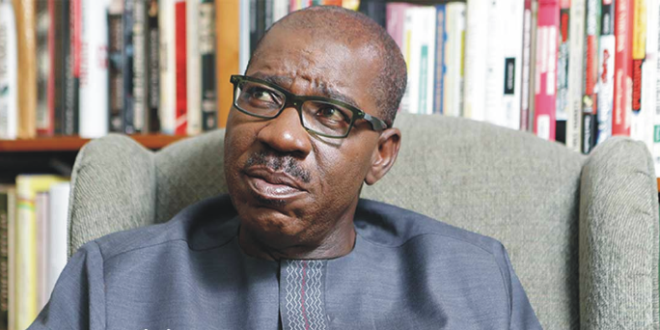

Obaseki moves against herdsmen in Edo


SERAP orders Obaseki to pay 48 months pension arrears within 14 days
Trending

 Football2 days ago
Football2 days agoGuardiola advised to take further action against De Bruyne and Haaland after both players ‘abandoned’ crucial game

 Business1 week ago
Business1 week agoDollar crashes further against Naira at parallel market

 Business1 week ago
Business1 week agoRecapitalisation: Zenith Bank to raise funds in international capital market
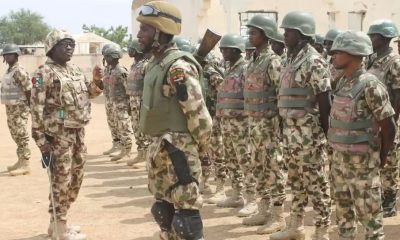
 Education1 week ago
Education1 week agoArmy reveals date for COAS 2024 first quarter conference

 Crime1 week ago
Crime1 week agoFleeing driver injures two on Lagos-Badagry expressway

 Covid-191 week ago
Covid-191 week agoBritish legislator demands Bill Gates, other ‘COVID Cabal’ faces death penalty

 Latest5 days ago
Latest5 days agoIsrael pounds Hezbollah with airstrikes after Iran attack

 Business1 week ago
Business1 week agoZenith Bank surpasses N2trn earnings milestone

